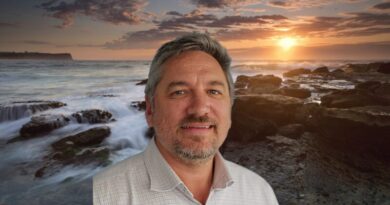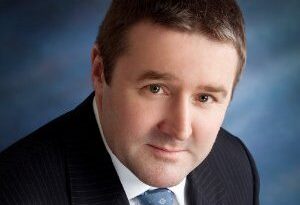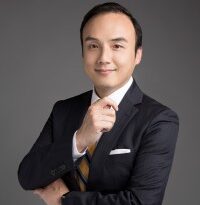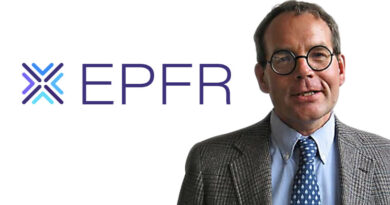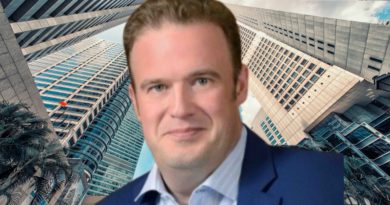Naruhisa Nakagawa: “Uncovering the true nature of the economy and markets”
Naruhisa Nakagawa is the Founder and Chief Investment Officer of Caygan Capital, a multi-strategy asset management firm serving institutional investors and investing globally. Hedge Funds Club’s Stefan Nilsson decided to have a chat with Naruhisa about his investment strategies, the roles of macro views and social responsibility and managing a team of professionals spread across the UK, Singapore and Japan.
Naruhisa Nakagawa is the Founder and CIO of Caygan Capital. He joined GCI Asset Management in 2009 to develop multi-strategy funds and later initiated a spin-off to establish Caygan Capital. Naruhisa graduated from the University of Tokyo and worked at Goldman Sachs and Merrill Lynch prior to joining GCI. Having spent most of his career in Tokyo, Naruhisa had a short stint in Singapore before relocating to London in 2015.
Your flagship fund is a multi-strategy fund. You have divided the strategy into a primary strategy and several secondary strategies. Tell us about it!
Our flagship is a Japan-focused multi-strategy fund launched in 2009. In 2011, following investor demand, we launched the global version of this strategy. For both these funds, we seek to balance long credit and long volatility instruments over credit cycles. We aim to deliver strong risk-adjusted returns with a low correlation to markets. Our premise is that a portfolio with the optimal mix of the two would theoretically perform well in most market conditions. Supporting our core strategy are macro-overlays and equity long/short positions. Here is a brief overview of each: Credit – We hold positions in financial credits where our investment process has identified mispricing opportunities and that provide the best risk/reward opportunity set for their yield. These are core positions and are adjusted depending on where our macro research leads us to believe we are in the credit cycle. Volatility – We hold volatility positions where we have identified dislocations due to supply/demand imbalances. These are both independent alpha generators and hedges to credit positions. These are typically held until maturity and give the portfolio an inherent tail risk hedge. We take cues from our macro research to identify the overall allocation to each component. Macro overlays – Not only are these hedges for our credit and long/short equity book, but we have identified opportunities to take additional risk to profit from themes our research has identified such as Inflation risk and climate change. L/S equity – Where opportunities exist, we add to our L/S equity book with either dividend stocks or growth stocks. These equity positions help to diversify the return stream and improve the risk/return characteristics of the overall portfolio. The supporting strategies of macro-overlays and L/S equity help to diversify the return stream and improve the risk/return characteristics of the overall portfolio.
What role does social responsibility play in the fund?
Our main priority remains to achieve strong risk-adjusted performance over the longer term. However, we acknowledge that in making investment decisions and allocating capital to various asset classes and sectors globally, we have a duty to act responsibly with respect to the environment and social concerns. In 2019, we put in place a responsible investment policy that applies to all investment activities. All investments are subject at a minimum to exclusion policies and are regularly monitored. We also create quarterly responsible investment reports that can be provided to investors. At a firm level, we are UNPRI signatories and committed to reducing carbon emissions from our operational activities. We have also re-directed profits from our business into early-stage companies looking to address climate change and other key social concerns.
How big of a role do macro views play in your investment research and allocation decisions?
Macro research is key to our multi-disciplinary research process as it guides us to where we are in the credit cycle. This is a key consideration in determining our top-level allocation to credit and volatility buckets. Additionally, macro research around inflation, government policies, unemployment and economic growth helps to identify opportunities for portfolio hedges or new investment themes. We conduct our macro research through retrieving and independently analysing data obtained directly from primary sources. We do not rely on external research. Despite its importance, macro research is but one part of our multi-disciplinary approach that also includes company fundamentals and quantitative analysis. For example, it may identify that climate change initiatives and related government policies could impact stock market prices. However, we will not be able to identify the relevant stock investment ideas without fundamental and quantitative research components. Similarly, a compelling investment opportunity identified by company fundamental research may not be acted on if it reveals less than conducive economic/policy conditions or if quantitative research reveals worsening price trends. Ultimately, we believe a multi-disciplinary approach provides the breadth and depth in analysis needed to navigate a portfolio across various market conditions. This approach has served us well, helping to generate double-digit annualised returns for over ten years.
In addition to your flagship fund, your firm also manages credit portfolios and venture capital. How do you ensure that those additional strategies are advantages rather than distractions for you and the firm?
Our starting point is research. Our focus on macro, fundamental and quantitative research allows us to uncover investment ideas and identify investment opportunities in any asset class – equity, bonds, currencies, commodities and all their derivatives. Our multi-strategy funds have a broad investment mandate and are the main entities through which these various investment ideas are implemented. In 2016, we had requests from investors to replicate a certain portion of our multi-strategy book. This resulted in Caygan providing trading advisory services to a number of long-only credit portfolios managed by an external manager. These reflect the financial credit component held in our global fund. Over the last few years, our research uncovered notable developments in clean energy, healthcare and certain technological advancements. Though there were opportunities for investments in the public space, our research pointed to a number of companies in the private space relying on emerging technologies that could disrupt the businesses of their listed competitors. It was clear to us that we had to research these private companies as well to better appreciate the risk they presented to public companies. And since the best understanding comes from actually making an investment, I have invested and continue to invest my own capital in such early-stage companies. Through our knowledge amassed from such activities, we have been able to pick out listed companies with a good competitive advantage and these have contributed strong returns to our multi-strategy funds.
You have a team of 18 professionals across three locations – London, Singapore and Tokyo. How do you make it work when the team is geographically separated?
Since early 2020, I believe most of us in the industry have been working remotely even when located within the same city. Rapid improvements in technology have made communications across geographical borders seamless. We are able to have video meetings, share documents, make presentations and all of this while at our desks and having access to our PCs. In some ways, it has made discussions more productive. For reference, we are split as follows – London: Portfolio management – I am based in London as I feel London’s working hours are best suited for me to cover markets globally. Additionally, being based in London gives me access to resources that I would have been unable to get being based in Asia. Business development – As we target investors globally, it makes sense for our team to be based in a time zone conducive to covering Asia, Europe and US hours. Research – We have one fundamental research analyst based in London. As she covers European companies, London is a good location for her. Singapore: Portfolio management – We have a team of traders who work around the clock. Operations, compliance, risk monitoring – The rest of the non-investment team is situated in Singapore and work closely with one another. Japan: Research – We have one quantitative analyst, one fundamental analyst and one macro analyst based in Japan. I speak with them every day remotely. We seem to have found the right balance between ensuring good productivity while allowing for the research analysts to be in their preferred space. I feel the biggest downside to being based in different geographies is the reduced ability to socialise as a team. But as most of us have worked together for many years (average 7+), we have adapted quickly and despite the distances between us right now, productivity has not been impacted.
You have a solid background from your years working in investment banks. How beneficial was it to you to have that experience prior to moving into fund management?
After graduating from university and having a paper published on the pricing of convertible bonds, my subsequent roles in Goldman Sachs and Merrill Lynch gave me a strong foundation in multi-asset trading. I started off on the proprietary trading desks at Goldman Sachs focusing on convertible bonds trading and model development. At Merrill Lynch, I managed my own portfolio and was allowed to take risks in multiple asset classes. This was where I further developed my multi-asset strategy and honed my skills as a portfolio manager. Working in both these investment banks allowed me to experience and appreciate the different trading cultures, approaches to risk management and research within each of them. I was able to discern and adopt the best practices of both worlds.
You initially ran your multi-strat fund inside GCI Asset Management. Why did you decide to spin out and start your own firm?
In 2009 GCI gave me an opportunity to manage my own fund which I immediately accepted and am grateful for. We launched GCI Japan Hybrids with US$5 million. Over the next five years, GCI Japan Hybrids and Aleutian Fund, a global multi-strategy launched in 2011, grew in AUM to over US$400 million in total. At this point in my career, I felt I had sufficient experience and support to pursue my dream of running my own asset management firm under my own investment and business direction. I saw the launch of Caygan as the next stage in my career. Under Caygan, I have more flexibility and say in both the business and investment direction. I am now able to allocate more resources to certain aspects of investment research. Ultimately, Caygan gives me the platform to try and prove to the broader investment community that my research and investment style is effective over the longer term. As of today, my strategy has returned +11% annualised returns since inception (>10 years). I remain confident that my investment approach will continue to serve my investors well going forward.
I understand that GCI is a minority shareholder in Caygan. Does GCI currently work with Caygan in any capacity?
GCI remains a minority shareholder, but an important business partner for us. As a business partner, GCI remains our primary contact through which we access and provide our services to institutional investors in Japan.
You named your fund management firm after the Japanese expression “keigan”. What’s the story behind you choosing this as the name of your firm?
“Keigan” is a Japanese expression that can be loosely translated as having deep insight to uncover the true nature of things. This is the key philosophy that drives our investment research. True to this philosophy, we do our own internal in-depth research working on data from primary sources instead of relying on reports or analysis done by third parties. Through this, we believe we are able to uncover the true nature of the economy and markets. I also believe this is a key reason behind the good track record of our strategies. Given the importance of this concept to our performance, I thought it appropriate to name the firm after it.


